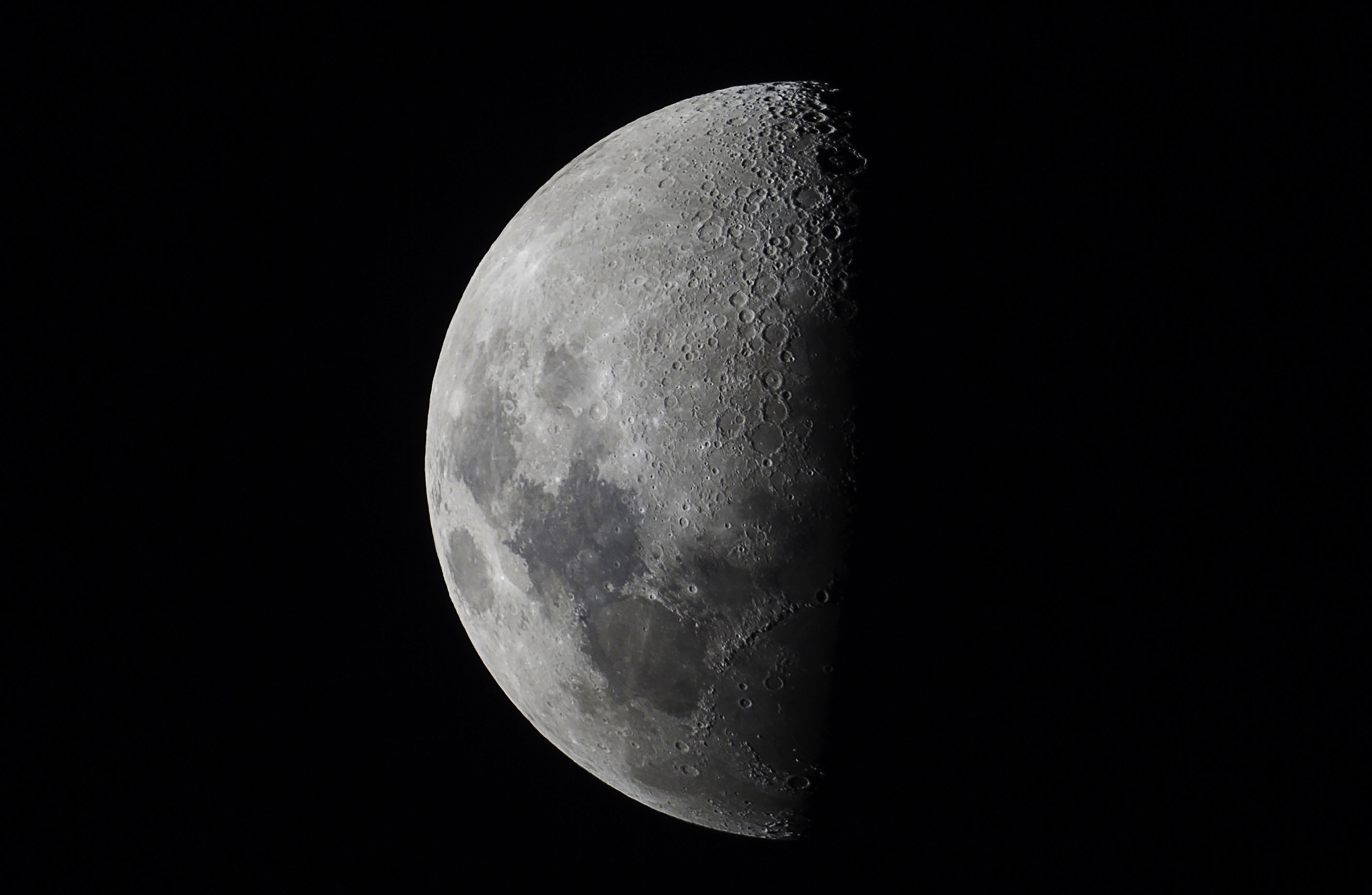Create a free profile to get unlimited access to exclusive videos, sweepstakes, and more!
Spring water is for Earthlings, on the Moon we’re drinking from volcanoes
There's nothing like a crisp glass of volcano water and watching the Earth rise over the horizon.

In 1969, humanity succeeded in populating a second world, however briefly, when Neil Armstrong and Buzz Aldrin set down on the surface of the Moon. Six crewed missions followed, each delivering two astronauts to the lunar surface before humanity departed for the last time. That is, at least until the Artemis missions send us back.
Getting back to the Moon appears to be a necessary starting point for our greater ambitions, exploring and potentially permanently populating other worlds in our system. If we have our druthers, we’d set off for parts unknown to find other planets around other stars. If our fiction is any indicator, that could be a potential source of strife as larger numbers of our species try to make a living in the hostile reaches of space.
In the 2005 film Serenity, based on the popular Firefly television series, members of the defunct Independents struggle to survive in the cosmic wastes while evading the influence of the inner planets’ Alliance. Even without the conflict of an interplanetary civil war, surviving off Earth is going to require a solid plan for finding and acquiring necessary resources like water.
Closer to home, our planet’s space agencies are looking to the Moon in hopes of finding a way to acquire resources we’re going to need in order to build a more permanent present among its magnificent desolation.
The Moon is often thought of as a dry, dead rock, but that’s not entirely true. The Moon has gone through many of the same geological processes as the Earth, only on a smaller scale. In its youth, the Moon was a world ablaze, covered in a global magma ocean and punctuated by volcanoes.
Using surface temperature data from the Lunar Reconnaissance Orbiter, Andrew Wilcoski, and colleagues, from the University of Colorado Boulder have created new models which suggest those volcanic eruptions may, counterintuitively, have been responsible for the accumulation of water ice on the Moon’s north and south poles. Their findings were published in The Planetary Science Journal.
Observations indicate that there are large stores of ice at the Moon’s poles but, to date, it hasn’t been clear how they got there. Previous hypotheses have involved delivery from impactors like asteroids and comets and solar wind synthesi. While those methods likely contributed some water to the Moon, a significant portion may have been ejected and sequestered by volcanoes erupting between 2 and 4 billion years ago.
“The uncertainties on all of these sources are still pretty big. Right now, solar wind implantation is generally agreed to be the least significant. Delivery by comets is still an open question but it’s probably comparable to the mass of ice we’re saying it was possible for volcanoes to deliver. Before this work, people thought volcanism was maybe a couple hundred times less important than impact delivery. We’re saying that isn’t necessarily the case,” Wilcoski told SYFY WIRE.
On Earth, when volcanoes erupt, they carry volatiles, including water, into the air. On the Moon, there is no air, but the volatiles are still ejected. Once the water has been liberated from the lunar interior, it becomes the subject of a tug of war between the Moon and the rest of space.
“It turns out, on the nighttime side of the Moon, the temperatures do get cold enough to condense water ice. If you run these models over a short time scale like a lunar day, you find that you form this frost on the whole night side. Then when it gets to dawn, once the Sun rises, the ice starts to sublimate away and get mixed back into the atmosphere,” Wilcoski said.
Several processes go to work, attempting to strip the water away. Among them are thermal escape, in which water is heated enough that thermal pressure accelerates it away from the surface; photochemical loss, in which molecules are broken down until they are no longer water; and sputtering from solar winds. In order for the Moon to have held onto a significant portion of its water it would have needed a shield from those processes and, as it turns out, volcanoes are good for that too.
The models suggest that volcanic eruptions released enough mass into the space around the Moon to create temporary collisional atmospheres which could have lasted thousands of years or longer. It’s not believed that they persisted between eruptions, which are estimated to have occurred roughly every 22,000 years, on average, but they would have stuck around long enough for some of the water to condense and collect in ice stores.
“These atmospheres were thick enough that all the molecules are running into each other, as opposed to an exosphere where a molecule traveling toward space is just going to end up in space. The importance of it being collisional is that the atmosphere is well-mixed. It’s what allows the water to be transported,” Wilcoski said.
Despite each eruption delivering only millimeters worth of water, their collective action resulted in ice stores hundreds of meters thick which still exist at the poles today, as a happy consequence of the Moon’s obliquity. Because of the low obliquity — roughly 1.5 degrees — the polar regions remain permanently in shadow, even as the Moon makes its slow four-week revolution.
We’ll learn more about the Moon’s polar ice stores in late-2023 when the VIPER rover lands at the southern pole for its 100-day mission. While there, VIPER will investigate the distribution of water ice and inform potential methods for extracting it on future crewed missions.
Once we figure that out, astronauts could sustain themselves on water released and protected by Moon volcanoes in the early years of the solar system’s formation.



























